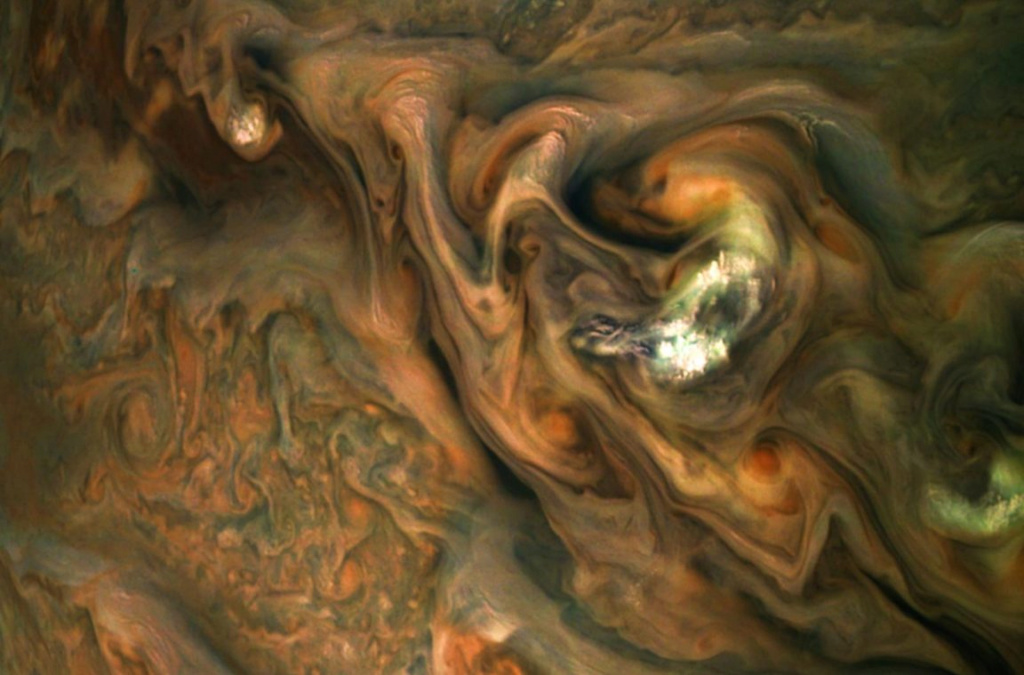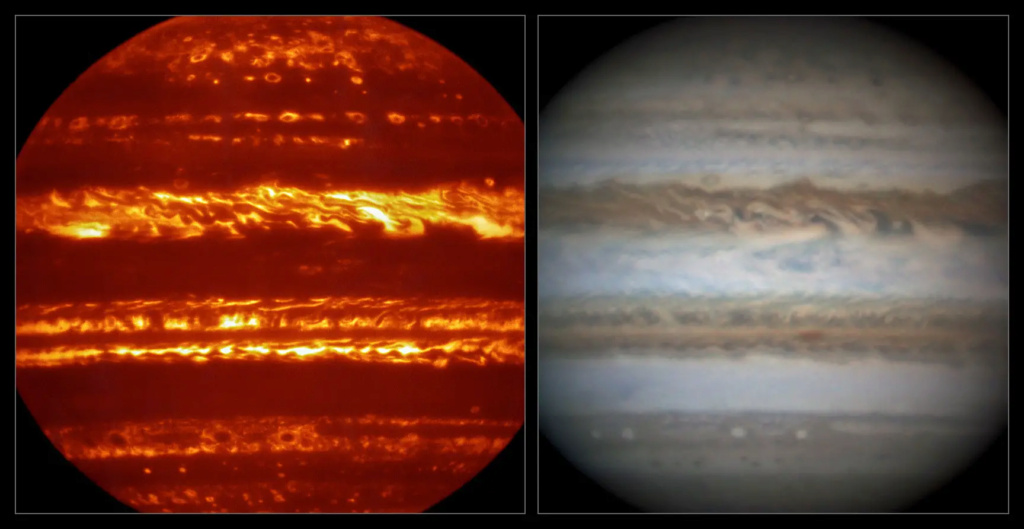Scientists Monitor A Significant Change In Temperature Inside The Clouds Of Jupiter

A careful study of 40 years of data has revealed something puzzling going on on Jupiter. The abundant information gathered from ground-based and space telescopes shows regular temperature fluctuations in Jupiter's upper troposphere that do not appear to be related to any seasonal variations. This exciting result may help Scientists finally understand Jupiter's strange weather.
"Part of the puzzle has now been solved is that the atmosphere exhibits these natural cycles," says planetary scientist Lee Fletcher of the University of Leicester in the UK. "To understand why this is so and why they occur on certain timescales we need to explore the cloudy upper and lower layers."
Jupiter is a confusing planet, as it is the largest planet in the solar system and is completely different from planet Earth, as it is covered with thick layers of clouds, in addition to the occurrence of huge storms that may grow to sizes larger than those on Earth, this strange weather prompted scientists to try to understand it .
Jupiter is known to be surrounded by alternating groups of light and dark clouds known as zones and belts that orbit Jupiter in opposite directions.
Infrared images show that the dark belts are partially warmer; Because the clouds are thinner, which allows heat to escape from the inside of the planet.

Jupiter rotates on its axis by only 3 degrees with respect to its orbital plane around the sun, meaning that Jupiter does not tilt much, which is interesting compared to Earth and other planets such as Mars and Saturn, as the strong axial tilt (23.4 degrees for Earth) indicates the poles towards the sun or away from it, causing marked seasonal differences in temperature.
Scientists had never expected Jupiter to experience such large cycles of temperature changes, but until now large, long-term data on Jupiter's temperature were not available to verify whether this was happening. Data from the Voyager and Cassini space probes, the European Observatory's Large Telescope, the Subaru Telescope, and NASA's Infrared Telescope Facility provided much of the thermal information for the team of scientists led by planetary scientist Glenn Orton of NASA's Jet Propulsion Laboratory.
After examining the information, the team found temperature fluctuations with periodic periods between 4-7 to 9-10-14 years and spanning different latitudes. They found that they appeared to be separate from seasonal changes in temperature, yet there was some internal coherence.
As temperatures rise at specific latitudes in the northern hemisphere, they decrease at corresponding latitudes in the southern hemisphere, specifically at 16, 22, and 30 degrees, as if Jupiter is a mirror of itself divided by the equator and maintains thermal balance.
And Orton says: “This is very surprising, because we found a connection to how temperatures differ at very distant latitudes, which is similar to a phenomenon that we see on planet Earth, and the weather and climate in one region may affect the weather in other places, that is, they are connected to each other over great distances.” through the atmosphere.”
It is unclear what links these temperature fluctuations, and evidence can be found in Jupiter's atmosphere in the clear stratosphere above the cloudy troposphere.
At Jupiter's equator, temperature differences in the troposphere correspond to an opposite variation in the stratosphere, indicating that a difference at higher altitudes influences what occurs at lower altitudes, or vice versa.
This study is a very important piece of the puzzle that may one day help scientists understand and accurately predict Jupiter's weather. "Measuring temperature changes and periods over time is the first step to predicting full detail about Jupiter's weather if we can relate cause and effect to Jupiter's atmosphere," says Fletcher. exist.”
Source: websites

